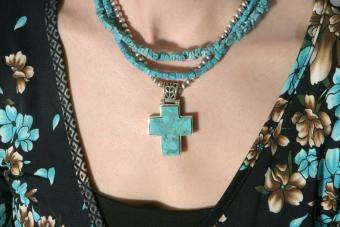
The May birthstone - emerald - is considered one of the three most desirable colored gemstones available. Alongside rubies and sapphires, emeralds have been mined and used by humans for decoration for hundreds of years. With ancient symbolic ties and contemporary connections to the changing seasons, emerald jewelry has yet to go out of style. Explore this historic gemstone and discover what makes it a perfect fit as the May birthstone.
How Are Emeralds Made?
Emeralds are stones that form inside beryl minerals when chromium, vanadium, and iron are present. Varying amounts of each of these compounds correlate to the different shades, hues, and intensities of the emeralds around the world. Most of the world's emerald supply comes from Colombia, though Zambia, Brazil, and Zimbabwe also play a significant role in emerald production.

Historic Emerald Mining and Trade
According to one gemological study published in Science, scientists learned that many of the ancient emeralds once thought to have been harvested from Egypt or the Austrian region were actually mined from the Middle East and transported to those territories. Similarly, the formal emerald trade has been operating since Spanish conquistadors in the 16th century were transporting emeralds on their voyages. These historic populations valued emeralds for their rich color, durability, and connections to themes of everlasting love.
Unique Characteristics of the May Birthstone
While most people know what an emerald looks like, far fewer people know anything more specific about these rich, green gems. Take a look at some of the characteristics that define this enviable gemstone.
Hardness
Surprisingly, emeralds are particularly strong gems with a hardness that ranks on the Mohs scale between 7.5-8. Considering that diamonds, the hardest mineral on the planet, have a Mohs rating of 10, emeralds can give most gemstones a run for their money. This durability is really helpful in ensuring that emerald jewelry stays pristine for many, many years.
Imperfections
Emeralds are one of the rare gemstones that almost always have imperfections present; these inclusions can cause raw emeralds to be reduced 80-95% of their original size in order to get enough unincluded material to create one or two faceted stones. Unfortunately, this total yield loss directly contributes to emeralds' high prices.
May Birthstone and Emerald Symbology
The traditional conception for the birthstone chart was invented in the 18th century, though a modern list of these birthday gemstones was released by the National Association of Jewelers in 1912. While some of the traditional stones were changed to represent transparent gems that could be easily cut into uniform facets and set into rings or necklaces for children's mothers, emeralds remained the May birthstone. Ancient cultures associated emeralds with their myths and lore about love, wonderment, and health, but contemporary sources like to connect emeralds with the springtime that May brings. Either way, these formidable gemstones exude a timeless truth and strength that all who wear them can appreciate.
Emerald Jewelry Expenses
In general, emeralds are particularly expensive gemstones. Depending on the net carat weight of the emeralds within whatever piece of jewelry strikes your interest, you could pay upwards of $25,000 on one piece such as this emerald necklace set into 18k gold that's priced at $28,500. Thankfully, there is an abundance of more affordable emeralds on the market. These are usually synthetic, lab-created emeralds and come in fractional carat weights. However, if you're really interested in having the most valuable emeralds available, the most significant attribute to investigate is color.

Hue and Saturation's Impact on Emerald Prices
Given that color is the major appeal of emeralds, it's important to understand what you're looking for when trying to purchase one. Most emeralds from the Colombian region come in bluish-green hues. Currently, bluish-green emeralds, rather than the yellowish-green variety, are the more valuable hue. Additionally, emeralds that have a really rich, vibrant green color are considered highly saturated and are accordingly expensive. Emeralds with lower saturation will appear more opaque, sometimes even milky, and you can find these priced at a few hundred dollars.
Caring for Your Emerald Jewelry
Although emeralds are a sturdy stone, you want to make sure never to use an ultrasonic cleaner to brighten your emerald jewelry as it can irritate, and even break open, the inclusions present in your stones. The easiest way to clean your emeralds is to use a mild soap and water, but make sure not soak them for too long or else you might loosen the stones from their settings. When storing your freshly cleaned emeralds, keep them away from other jewelry since their high hardness levels mean that they'll scratch a lot of other gemstones if they're absently thrown together.
Green With Envy Over Emeralds
It's hard not to be green with envy when you see somewhere wearing a beautifully vibrant piece of emerald jewelry. Given that the greenish hues pair so well with yellow, emeralds are often set into gold, serving to make their pieces even more desirable. Yet, if you're a May baby and you want to take pride in your birth month, but you can't afford the thousands of dollars for an elaborate emerald piece, look to finding smaller carat weights of less saturated, synthetic emeralds to purchase. So, don't be shy about making others green with envy over your birthstone jewelry and find the perfect emerald piece for you.







